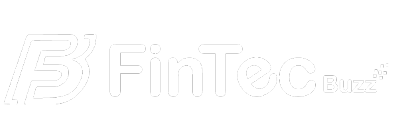When it comes to obtaining financing for personal or business purposes, borrowers have two primary options: direct lending and indirect lending. Direct lending involves obtaining a loan directly from a lender, while indirect lending involves obtaining a loan through a third party, such as a broker or dealer.
In this comprehensive guide, we will take an in-depth look at the differences between these options. We will explore the advantages and disadvantages of each option, the types of loans available through each method, and the factors to consider when deciding which option is best for your unique needs.
What is Direct Lending?
1. Definition: Direct lending is a financing method in which a borrower obtains a loan directly from a lender without any intermediaries. The lender may be a bank, credit union, or online lender, and they are responsible for setting the loan terms, approving or denying the loan application, and disbursing the funds.
2. How it Works: This process involves the borrower applying for a loan directly with the lender, either in person or online. The lender will then review the borrower’s creditworthiness and financial history, and if approved, will offer a loan with specific terms, such as the loan amount, interest rate, repayment term, and any fees.
3. Advantages: There are several advantages to this method. First, borrowers can often obtain lower interest rates and fees compared to indirect lending, since there are no intermediaries involved. Additionally, borrowers have direct contact with the lender, which can lead to better communication and a more personalized experience. Direct lending can also be faster since there are no intermediaries involved in the loan approval process.
4. Disadvantages: However, this method also has some disadvantages. Since the lender takes on all the risk, they may have stricter requirements for loan approval, such as higher credit scores or income levels. Additionally, some lenders may have limited loan options or may only specialize in certain types of loans.
5. Types of Loans Available: Types of loans available through direct lending include personal loans, business loans, auto loans, mortgages, and more. Each type of loan may have its own specific terms and requirements, so it’s important to research and compare lenders before applying for a loan.
What is Indirect Lending?
1. Definition: Indirect lending is a financing method in which a borrower obtains a loan through a third party, such as a broker or dealer. The third party acts as an intermediary between the borrower and the lender and is responsible for submitting the loan application to the lender and facilitating the loan disbursement.
2. How it Works: The process of indirect lending involves the borrower applying for a loan with a third party, who will then submit the loan application to a lender on the borrower’s behalf. The lender will review the loan application and make a decision on loan approval and loan terms. If approved, the lender will disburse the funds to the third party, who will then pass them on to the borrower.
3. Advantages: There are several advantages to this method. First, third-party intermediaries may have access to a wider range of lenders and loan products, which can provide more options for borrowers. Additionally, intermediaries may have established relationships with lenders, which can lead to faster loan approval and funding. Indirect lending can also be helpful for borrowers who may not meet the strict requirements for direct lending, as intermediaries may have access to lenders with more flexible requirements.
4. Disadvantages: However, this method also has some disadvantages. The involvement of third-party intermediaries can result in higher fees and interest rates, since the intermediary may charge their own fees on top of the lender’s fees. Additionally, borrowers may have less direct contact with the lender, which can lead to communication issues or a less personalized experience.
5. Types of Loans Available: Types of loans available through this option can include personal loans, auto loans, mortgages, and more. The specific types of loans and lenders available may depend on the intermediary used, as well as the borrower’s creditworthiness and financial history. It’s important to research and compare lenders and intermediaries before applying for a loan to ensure the best possible terms and rates.
Factors to Consider When Making a Choice
When choosing between these two options, there are several factors to consider to determine which method of financing is best for your individual needs. These factors include:
1. Creditworthiness: Your creditworthiness plays a significant role in determining whether you are eligible for a loan and what interest rate and terms you are offered. If you have a strong credit score and history, you may be able to qualify for better rates and terms through direct lending. However, if you have less-than-perfect credit, an intermediary may be able to connect you with lenders who are more willing to work with you.
2. Speed of funding: The speed at which you need the funds can also impact whether you choose direct or indirect lending. Direct lending can often result in faster funding, as there are fewer parties involved in the loan approval process. However, some intermediaries may be able to facilitate faster funding by working with lenders who have streamlined loan approval processes.
3. Loan amount: The loan amount you need can also be a factor in deciding between direct and indirect lending. If you need a large loan amount, a direct lender may be better equipped to offer the funding you need. However, if you only need a small loan, an intermediary may be able to connect you with lenders who offer more flexible terms and lower interest rates.
4. Interest rates: Interest rates can vary significantly between direct and indirect lenders, so it’s important to compare rates and terms before deciding on a loan. In general, direct lending may offer lower interest rates since there are no intermediaries involved. However, some intermediaries may have established relationships with lenders that allow them to offer competitive rates.
5. Fees and charges: Both direct and indirect lending may come with fees and charges, such as origination fees, application fees, and prepayment penalties. It’s important to review the fees associated with each loan option to determine which will be more cost-effective for you.
6. Repayment terms: The repayment terms of the loan can also be a significant factor in choosing between these two options. Direct lenders may offer more flexible repayment terms, such as longer repayment periods or lower minimum payments. However, some intermediaries may also offer flexible repayment options, so it’s important to review all options before making a decision.
Summing Up
Direct lending may be the right choice for those who have good credit and need quick funding for larger loan amounts, while indirect lending can be a suitable option for those with lower credit scores or those seeking smaller loan amounts with more flexible terms. Regardless of which method you choose, it is essential to read the terms and conditions of the loan carefully, and only borrow what you can afford to repay.
At the end of the day, both options have their pros and cons, and the choice ultimately comes down to individual needs and preferences. We hope that this comprehensive guide has provided you with the information you need to make an informed decision.



